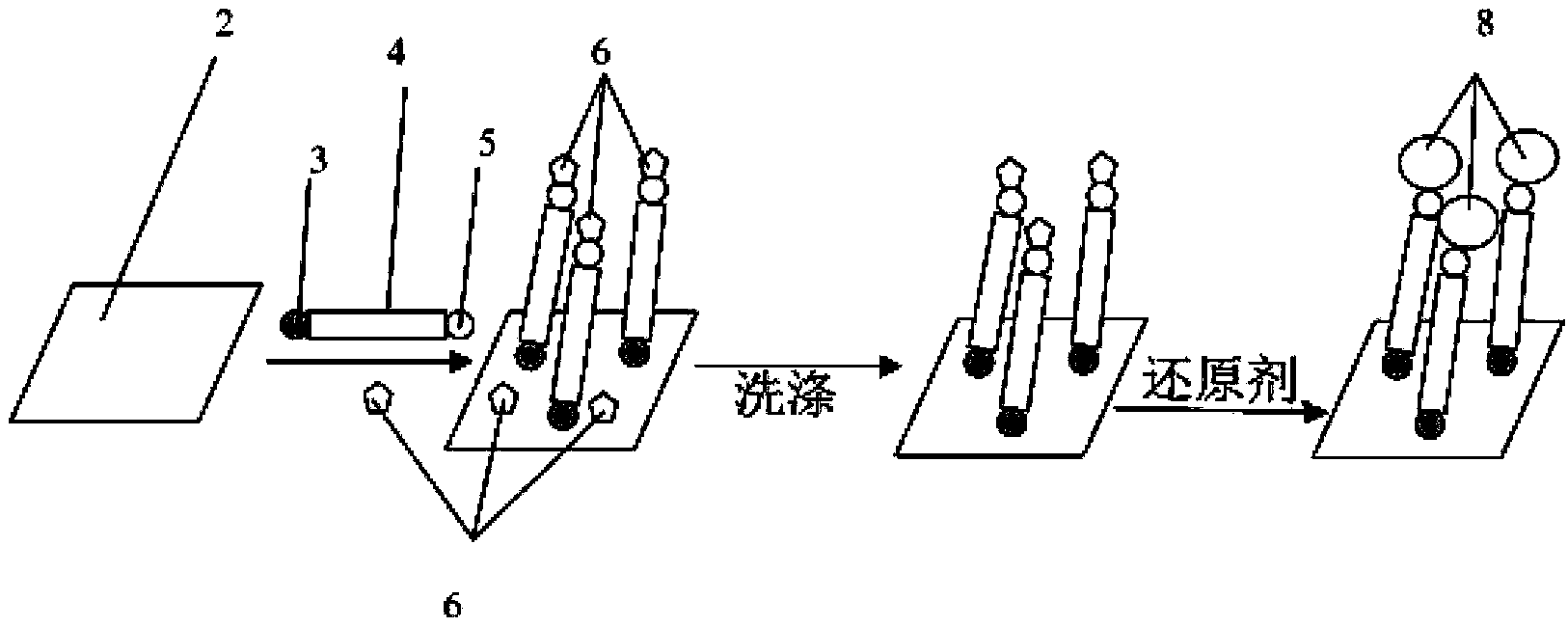Method of forming and immobilizing metal nanoparticles on substrates and the use thereof
A technology of metal nanoparticles and metal ions, applied in chemical instruments and methods, metal material coating technology, textiles and papermaking, etc., can solve the problem of metal leakage into the environment
- Summary
- Abstract
- Description
- Claims
- Application Information
AI Technical Summary
Problems solved by technology
Method used
Image
Examples
Embodiment 1
[0066] Embodiment 1: the preparation of epoxidized cellulose
[0067] 1 kg of commercially available powdered cellulose (Sigma-Aldrich) was stirred in 5 liters of aqueous sodium hydroxide (1.5M) at 60°C. 1 L of epichlorohydrin was added to the reaction mixture and stirred vigorously for 2 hours. The reaction mixture was filtered and the solid residue ("epoxidized cellulose") was washed three times with distilled water. Dry epoxidized cellulose can be obtained by vacuum drying.
Embodiment 2
[0068] Embodiment 2: prepare nano-silver cellulose
[0069] 150 g of the epoxidized cellulose prepared in Example 1 were stirred in 1 liter of water. 200 ml of hexanediamine (70% in water) was added in one portion, and the reaction mixture was stirred for 2 hours and drained. The solid residue ("aminocellulose") was washed three times with distilled water.
[0070] The resulting wet aminocellulose was redispersed in 1 liter of silver nitrate aqueous solution (0.1 M) and stirred for 3 hours. The reaction mixture was filtered and the solid residue was washed 3 times with distilled water before reduction to metal nanoparticles. The solid residue was dispersed in 1 liter of water at room temperature. To the mixture was added 100 ml of aqueous hydrazine (0.5 M) in one portion and stirred at room temperature for 3 hours. The reaction mixture was filtered and the solid residue ("nanosilver aminocellulose") was washed 3 times with distilled water. After vacuum drying, 170 grams o...
Embodiment 3
[0071] Embodiment 3: prepare nano-silver cellulose
[0072] 150 g of the epoxidized cellulose prepared in Example 1 was stirred in 1 liter of aqueous sodium carbonate (2.0 M). Add 100 grams of iminodiacetic acid at one time. The reaction mixture was stirred at 60° C. for 12 hours and filtered off with suction. The solid residue ("acidified cellulose") was washed three times with distilled water.
[0073] The wet acidified cellulose obtained was redispersed in 1 liter of silver nitrate aqueous solution (0.1M) and stirred for 3 hours. The reaction mixture was filtered and the solid residue was washed 3 times with distilled water before reduction to metal nanoparticles. The solid residue was dispersed in 1 liter of water at room temperature. 200 ml of aqueous sodium borohydride (0.6 M) was added in one portion to the reaction mixture and stirred at room temperature for 4 hours. The reaction mixture was filtered and the solid residue ("nanosilverated cellulose") was washed 3 ...
PUM
 Login to View More
Login to View More Abstract
Description
Claims
Application Information
 Login to View More
Login to View More - R&D
- Intellectual Property
- Life Sciences
- Materials
- Tech Scout
- Unparalleled Data Quality
- Higher Quality Content
- 60% Fewer Hallucinations
Browse by: Latest US Patents, China's latest patents, Technical Efficacy Thesaurus, Application Domain, Technology Topic, Popular Technical Reports.
© 2025 PatSnap. All rights reserved.Legal|Privacy policy|Modern Slavery Act Transparency Statement|Sitemap|About US| Contact US: help@patsnap.com



